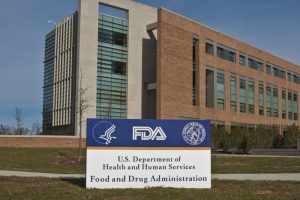
On April 22, the U.S. Food and Drug Administration (FDA) and Department of Health and Human Services (HHS) announced a plan to phase out all petroleum-based synthetic dyes from the nation’s food supply as part of the Make America Healthy Again (MAHA) movement.
FDA is taking numerous actions including establishing a national standard and timeline for the food industry to transition from petrochemical-based dyes to natural alternatives. The agency will revoke authorization for two synthetic food colorings—Citrus Red No. 2 and Orange B—within the coming months.
Additionally, FDA is also working to eliminate six other synthetic dyes—FD&C Green No. 3, FD&C Red No. 40, FD&C Yellow No. 5, FD&C Yellow No. 6, FD&C Blue No. 1 and FD&C Blue No. 2—by the end of 2026. The agency is also requesting food companies to remove FD&C Red No. 3 sooner than the original 2027-28 deadline.
FDA will partner with the National Institutes of Health (NIH) to conduct comprehensive research on how food additives impact the health and development of children. It will also fast-track the review of natural alternatives to synthetic food dyes.
“For too long, some food producers have been feeding Americans petroleum-based chemicals without their knowledge or consent,” said HHS Secretary Robert F. Kennedy, Jr. “These poisonous compounds offer no nutritional benefit and pose real, measurable dangers to our children’s health and development. That era is coming to an end. We’re restoring gold-standard science, applying common sense, and beginning to earn back the public’s trust. And we’re doing it by working with industry to get these toxic dyes out of the foods our families eat every day.”
“Today, the FDA is asking food companies to substitute petrochemical dyes with natural ingredients for American children as they already do in Europe and Canada,” added FDA Commissioner Marty Makary, MD, MPH. “We have a new epidemic of childhood diabetes, obesity, depression, and ADHD. Given the growing concerns of doctors and parents about the potential role of petroleum-based food dyes, we should not be taking risks and do everything possible to safeguard the health of our children.”
The natural products industry responded to the synthetic dye ban, calling the decision “long overdue.”
“It’s great that they are doing this, but we have had products without these synthetic dyes on shelf for 90 years now. Hopefully, this will cause the customer to start asking questions about other potentially harmful ingredient and start searching out the independent natural products for those healthier options available today!” said SENPA President Jeff Shackelford.
Retailer Pat Sardell, owner of Country Vitamins in Corvallis, OR said the long overdue ban is “an encouraging effort linking health, the environment and the power of informed, concerned consumers.”
“Multiple studies over the years have linked certain artificial dyes to hyperactivity in children, allergic reactions, and even carcinogenic effects under specific conditions, sparking widespread alarm among consumers and advocacy groups alike. It’s a positive step forward to making food products in the U.S. safer and encouraging the use of natural ingredients for coloring as they already do in Europe and Canada,” Sardell said.
Jim Roza, chief scientific officer at Layn Natural Ingredients (Irvine, CA) applauded the efforts based on the link between artificial colors, cancer and other maladies. However, he believes the public should be equally concerned about both synthetic food dyes and artificial sweeteners.
“These sweeteners have been foisted upon consumers for decades with the notion that they would aid in weight loss, reduce type 2 diabetes and curb sugar cravings. Has it worked? The consensus among health professionals is that it hasn’t and could be the cause of illness,” Roza explained. “Cancer rates continue to rise, obesity and diabetes are at epidemic proportions and the evidence that these ingredients are harmful continues to grow. Although a direct correlation between their use and disease has not been proven, there is a body of research which has shown a possible link between the two.”
For more information, visit www.fda.gov.



















